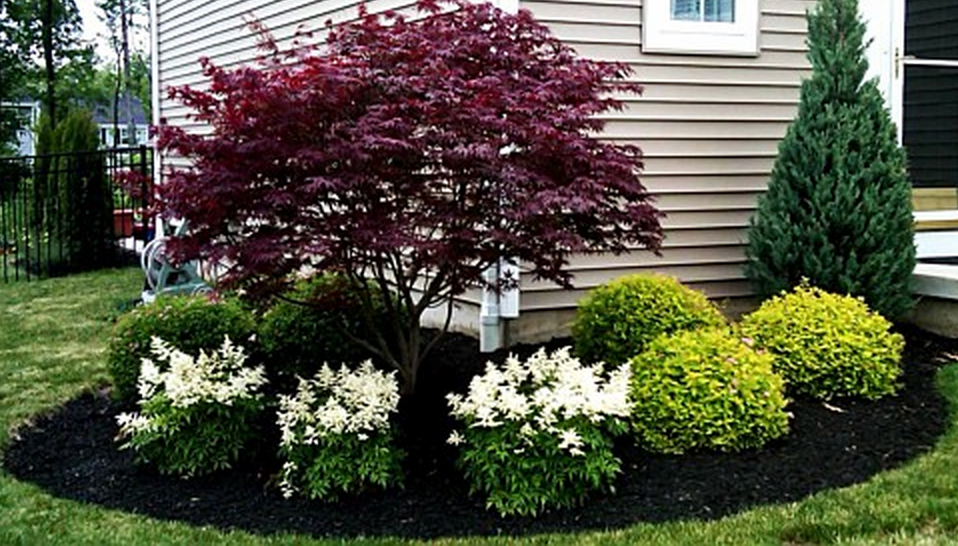I’m getting a lot of different opinions about this tree. Is it safe to plant it near a house? One says the roots are good and that many people plant them close to the foundation, while the other says the roots spread and take over. So which is it. I bought this tree thinking it was safe. Now im regretting it. The last thing I could do is get rid of my pygmy palm in the front yard and plant a maple tree in its place.
With their graceful shape and colorful foliage, Japanese maples are prized landscape trees But these lovely trees can grow quite large, and their roots can damage foundations and pipes So how close is too close when planting a Japanese maple near a house?
In this article, we’ll examine the factors that determine safe spacing for Japanese maples including
- Japanese maple root characteristics
- Risks of planting too close
- Recommended setback distances
- Ideal conditions for healthy growth
- Solutions for small spaces
- Best practices for planting
By understanding maple root habits and potential downsides, you can make informed choices when incorporating Japanese maples into your landscape. We’ll provide clear guidelines to help position these elegant trees at an appropriate distance from your home’s perimeter.
The Root Habits of Japanese Maples
To understand how close Japanese maples can be sited near a house, it’s important to know their rooting habits:
-
Most have aggressive, fibrous root systems.
-
The majority of the roots extend 2-3 times the branch spread.
-
They grow a deep taproot along with lateral roots near the surface.
-
Though relatively compact, their roots can penetrate tiny openings.
-
They dislike disturbance and are difficult to redirect once established.
This tendency for vigorous, spreading roots means it’s crucial not to plant Japanese maples too close to the foundation or utility lines.
Risks of Planting Japanese Maples Too Close
Getting the location wrong when installing a Japanese maple can lead to issues including:
-
Foundation damage – shallow roots expanding under the home’s foundation can crack and displace it.
-
Pipe obstruction – roots eagerly grow into cracks and joints, blocking plumbing.
-
Sidewalk disruption – surface roots lift and buckle concrete walks and driveways.
-
Poor maple health – trees struggle in the hot, dry area near foundations and reflected heat.
-
Difficult pruning and removal – trying to cut back or remove a large maple too close to a structure damages the building.
Recommended Setback Distance
Most experts recommend allowing an area equal to the tree’s expected mature spread between a Japanese maple and any structures.
For example, if a particular maple cultivar has a mature spread of 15 feet, plant it at least 15 feet away from the house, driveway, utility lines, etc.
Smaller varieties with an 8-10 foot spread should be planted no closer than 10 feet from buildings for best results.
Ideal Conditions for Healthy Growth
Japanese maples grow their best when provided with:
- Rich, well-drained, slightly acidic soil
- Cool root zone
- Consistent moisture
- Afternoon shade, especially in hot climates
- Shelter from strong winds
The hot, dry area near foundations is often deficient in these requirements. This stresses maples, leading to reduced health and more rampant roots seeking moisture and nutrients.
Solutions for Small Yards
While allowing adequate space is ideal, there are a few ways to plant Japanese maples somewhat closer to structures in small garden spaces:
-
Choose the most compact cultivar sized appropriately for your site.
-
Install a root barrier along the foundation to redirect roots downward.
-
Grow the maple in a large container that can be moved as it grows.
-
Plant in the corner of the yard rather than midway on a side for quicker shade.
-
Provide supplemental mulching and irrigation near the foundation.
Best Practices for Planting
When installing a Japanese maple near a structure, use care to give it the best start:
-
Dig a wide planting hole no deeper than the root ball.
-
Place the tree in the hole so the first flare of roots sits at ground level.
-
Backfill with native soil, tamping down to eliminate air pockets.
-
Water thoroughly and apply mulch following planting.
-
Stake the tree for 1-2 years until well established.
With Japanese maples, proximity planning is crucial. Allow enough room for the roots to spread without causing damage. Monitor regularly and prune selectively to maintain optimal health and form.
By following these guidelines for planting Japanese maples the right distance from your home, you can safely incorporate these stunning focal points within small lot landscapes. Their elegance enhances any outdoor space when provided with the conditions and breathing room they require to thrive.
Where Should I Plant My Japanese Maple?
- The Ultimate Guide to Growing Strawberries in Raised Beds - August 8, 2025
- No-Dig Garden Beds: The Easiest Way to Grow a Beautiful Garden - August 6, 2025
- How to Protect and Preserve Wood for Raised Garden Beds - August 6, 2025

